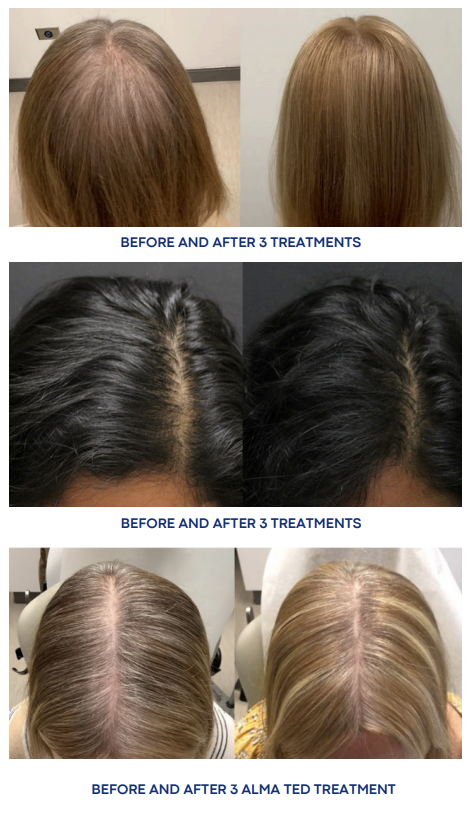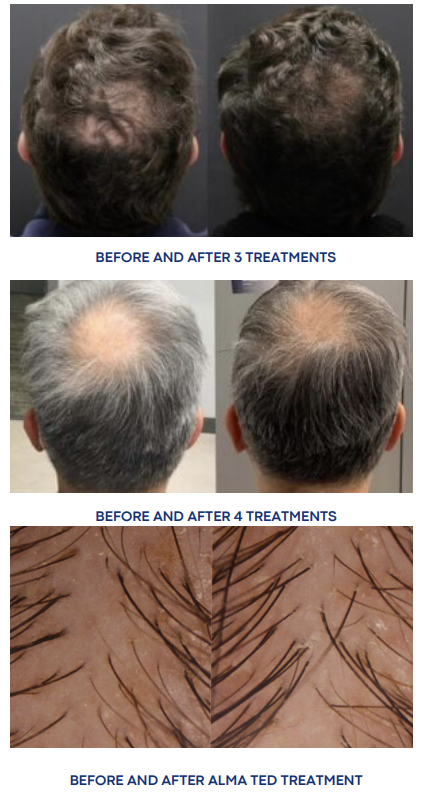Hair Restoration Treatments
Medical Therapy to Help Maintain Your Existing Hair and Prevent Future Hair Loss
Here at Hair Transplant Specialists, we want to permanently restore the hair that you have lost and help you maintain that hair that you still have. This can be accomplished in several ways. Thee are the FDA approved methods. The goal in hair preservation is to maintain your exiting hair before the hair follicles die off.
PROPECIA®
Propecia (Finasteride) is a 1mg oral tablet taken daily and acts as a potent 5 alpha-reductase type-2 inhibitor. It blocks the conversion of testosterone to Dihydrotestosterone and decreases levels of DHT by about 65 percent. It is the most effective of all the medications and has shown impressive effects in both stopping or slowing further hair loss, as well as producing re-growth. The effects are greatest on the crown however it also has beneficial effects in the frontal area as well. Five-year results showed over 85% of men stabilized or improved.
Potential Propecia Side Effects
In general, after 25 years of being on the market, the side effects profile of finasteride is felt to be very low. In men the most common concerns are sexual side effects, gynecomastia and decreased semen volume. Numerous double-blind studies have shown the overall incidence of sexual side effects to be very low at less than 4.5% and reversible when stopped.
However, recent concerns have been raised on the internet over anecdotal reports of more permanent sexual side effects as well as other symptoms collectively called “Post Finasteride Syndrome (PFS)”. Whether or not this is a true clinical entity is currently controversial. Studies have been inconclusive and have been interpreted in multiple ways. The difficulty in interpretation is that many of the symptoms (i.e., ED, Depression, etc.) occur quite frequently in the general population and would be more frequent in the population of men having angst over hair loss without the influence of medication. Most physicians do agree that IF it does exist it has to be extremely rare and probably occurs in a small subset of patients with some predisposing factors.
However, PFS has made a big splash in the last few years and both physicians and patients need to be aware of this issue and be able to discuss it. The main decision to be made after an open discussion is whether the almost certain, very positive benefit of improved hair growth and density is worth the very small (but possible) risk of some of the symptoms of PFS.
Topical Propecia & Low Dose Propecia
In attempt to reduce potential side effects of Propecia even further two new approaches have been developed:
Low dose Propecia is the use of 1 mg only 3 times a week instead of 7 days a week. It is found to be almost as effective as oral treatment (70%) with less complaints of side effects.
Topical Propecia: A few pharmacies have developed a topical Propecia that stays in the skin. It has been reported, but unsubstantiated, to have fewer side effects but some side effects do still occur.
Advodart
Avodart is another 5-alpha-reductase inhibitor that blocks both type 1 and 2 versions of the enzyme. The blockade of the type 1 enzyme (in addition to type 2) decreases levels of DHT greater than 90 percent and is felt to be more effective than finasteride. However, it has a very long half-life and the side effect profile is thought to be worse than that of finasteride. It is not released for the treatment of male pattern baldness yet some hair transplant clinics prescribe Avodart off label for patients that are not responsive to finasteride.
Rogaine®
Rogaine (minoxidil) is a topical medication approved for both men and women. It is currently available as a 2% liquid, 5% liquid, and 5% foam. It is thought to act as a direct anagen-prolonging agent. Although not to the same degree as Finasteride, it is effective in both men and women. Although the packaging inserts state it is for the vertex, it works in both the front and crown.
Personal experience and experience from colleagues suggest that approximately 50% of men have their hair loss slowed or stopped, 20% show some signs of regrowth, and 30% continue to lose hair (i.e., no effect). Rogaine is currently available over the counter (OTC).
Many companies & pharmacies have created shampoos and topical lotions that contain Minoxidil plus other ingredients to combat hair loss. In many of the over-the-counter products that fight hair loss, the main component is Minoxidil. One popular product that patients seem to feel works is Formula 82M. Formula 82M contains 5% Minoxidil, tretinoin, the topical steroid 0.01% fluocinolone, a natural 5-alpha reductase blocking agent, oleanolic acid, and several other ingredients in non-propylene glycol base. Many patients feel it works better with less irritation than over-the-counter Rogaine foam.
To apply Minoxidil solution, simply fill the applicator with the prescribed amount. Then apply the solution evenly to the affected area of the scalp and gently massage the scalp.
Potential Rogaine Side Effects
A big problem with the use of Minoxidil topical is compliance. In addition to irritation, the original product was oily and messy. The newer 5% foam and the Formula 82m mentioned above contain no propylene glycol, so it is much easier to use and is better accepted by patients. It was recently FDA approved for women as a once-a-day therapy.
Another potential side effect in some women is increased facial hair, but it is uncommon and mild if it occurs. Minoxidil was originally used orally as a blood pressure medication. Therefore, and very rare, it has been reported to cause a slight drop in blood pressure and palpitations. Usually, one would have to be very sensitive or use more than recommended. We advise that you consult a healthcare professional before taking new medications if you have kidney disease, heart disease, or a pre-existing heart condition. You should get immediate medical help if you experience allergic reactions, difficulty breathing, hives, and swelling of your face, lips, tongue, or throat.
Oral Minoxidil
Oral Minoxidil is an option for patients who find the topical form too messy or prefer the pill’s convenience. It has been used in low doses ( 5mg) by Dr. Pathamovich in Thailand for 22 years, with reports of success and minimal side effects.
Low Level Laser Therapy (LLLT)
Low-Level Light Therapy or Cold Laser Light Therapy has become very popular over the last 10 years. Its main uses are tissue repair and relief from pain and inflammation. It was controversial and reserved for inconvenient office treatments using larger bulky appliance-sized devices. Over the last few years, many less expensive & in-home treatment laser light devices have been developed.
Several studies have confirmed that consistent use will thicken miniaturized hairs and slow hair loss. In some cases, new hair growth is observed. The results are variable, with some patients getting great results while others getting less impressive results. Still, it is a good adjunct for patients to consider.
This procedure is painless and noninvasive. Typically, a patient needs to use the laser device 3 times a week for only 20-40 minutes. Most devices are in the form of a helmet designed to be worn at home. Still, some options are present as a hat or ball cap, which are battery-powered and designed to be worn outdoors and while running short errands
ALMA TED (Trans Epidermal Delivery)
A revolutionary, non-invasive hair growth treatment for hair shedding, hair loss, and hair thinning.
TED uses an ultrasound-based system that uses sound waves and air pressure to enhance the penetration of a powerful topical hair growth formula into the scalp. This combination is designed to increase blood flow, optimize scalp health, and stimulate hair follicles to produce thicker, stronger, healthier hair.
Patients who are experiencing hair shedding, hair loss or hair thinning may be good candidates for treatment with TED. A consultation is recommended to determine if you are a good candidate for TED treatment. TED was developed to be used on any individual that is suffering from hair loss or want to improve the overall thickness and appearance of their hair.
When Alma TED is used with Topical Formula, it promotes increased blood flow to the scalp and healthier, thicker, stronger head of hair. It offers these benefits without the discomfort and shedding commonly associated with in-office hair growth treatments.
Alma TED is a quick 45-minute treatment. During your consultation, your scalp will be assessed to personalize the best treatment for you. You will notice improvement as early as one month following your first treatment, but it is typically recommended to have series of at least three TED treatments, one month apart, for optimal results
Alma TED Treatment is quite comfortable and, for many patients, relaxing. You can expect to feel a warm sensation from the device and vibration or ringing sound through the course of the treatment, but there is no pain involved. No needles, no anesthesia required. No trauma or discomfort at the scalp.
It’s important to know that every patient is an individual, and there is no “one size fits all” therapy and TED would require a series of three treatments, one month apart. Measurements would be used in every case to assess the response to treatment in several areas of the scalp. Some areas may respond better to a different type of therapy.
TED uses low-frequency “ultrasonic” acoustic sound waves and air pressure to drive topical hair growth treatments deep into the skin. The mechanical pressure of the sound waves creates a push-and-pull effect to facilitate the delivery of compounds through the stratum corneum layer.
Through the process of Alma TED, we can increase the penetration of topical hair growth treatments through the top layer of skin, allowing more of the active ingredients to reach the hair follicles located below.





